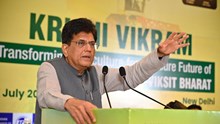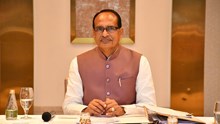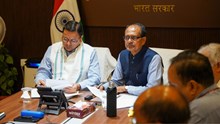
Amidst expectations of a magical transformation of the Indian economy, the Narendra Modi government took over the reins in May 2014. During the election campaign, people were led to believe that the Gujarat model of agricultural development, which delivered 8% growth in agriculture during fiscal years 2003-14, would be replicated in the country. Out of the government’s four years , FY15 and FY16 were affected by drought and it did well to manage the crisis. A number of welcome initiatives have been launched in the last four years, including schemes for crop insurance, irrigation, soil testing, electronic national agricultural market (e-NAM), and use of Aadhaar for the public distribution system (PDS) and purchase of fertilizer. While there are several creditable achievements, it is the deeper structural reforms where expectations from a “strong” government have not been met.
Helped by a downturn in the global prices of petroleum and commodities, the government took pro-active measures to rein in food inflation, which was 6.64% during United Progressive Alliance (UPA) I and 12.2% in UPA II. These included release of wheat and rice from government stocks, restrictions on exports, small increases in minimum support prices (MSP) (except pulses), raids on traders under the Essential Commodities Act, and even income-tax investigations. The states giving bonus on wheat and paddy were told to discontinue it. In order to reduce excessive procurement of rice, the 50% levy on rice mills was also abolished.
In August 2014, it set up a committee under Shanta Kumar to recommend restructuring of the Food Corporation of India (FCI). This made far-reaching recommendations about agriculture policy, subsidies on food and fertilizers, and the role of FCI. It recommended that coverage of beneficiaries under PDS be reduced from 67% to 40% and cash transfers introduced instead of foodgrains in cities with a population of more than one million. In the case of fertilizers, the committee recommended deregulation and payment of subsidy to farmers through direct benefit transfers (DBT). With the aggressive posturing by the ruling party vis-a-vis the opposition, there was hardly any possibility of opposition-ruled states agreeing to such reforms but the government did not make any serious effort to persuade even the National Democratic Alliance (NDA)-ruled states to go for DBTs for PDS , even in food-surplus regions. Similarly, there was no effort to deregulate urea prices and transfer subsidy to farmers directly. Aadhaar-based sale of foodgrains and fertilizer is only a small step towards reform of the subsidy regime. Similarly, free electricity continues to cause excessive drawal of underground water in several states. No serious effort was made to persuade states to transfer electricity subsidy through DBT.
Sugar is another sector where the government had the benefit of the C. Rangarajan committee report, which had recommended a revenue-sharing formula under which 70-75% of the revenue of sugar mills from sugar and by-products would be shared with farmers. If sugar prices were low, farmers would still be guaranteed fair and remunerative prices (FRPs) fixed by the Centre. If they were high, farmers stood to benefit. But it was possible to build a consensus on this reform only when sugar prices were high. UPA II, towards the end of its term, abolished the 10% levy on sugar and controlled release mechanism under which the Union food ministry decided the quantity of sugar to be sold by each mill every month. At one stroke, the sugar division in the food ministry lost its lordship over sugar mills. It is an irony that there is now a proposal to bring back stock limits on sugar and again allow the government to decide how much sugar a mill can sell each month.
To check food inflation, a price stabilization fund was set up with a corpus of Rs500 crore and onion and potato were bought by the National Agricultural Cooperative Marketing Federation and Small Farmers’ Agribusiness Consortium for release in the market when prices rose. Another successful policy intervention was to offer a handsome increase in the MSP of pulses and create a buffer stock of two million tonnes. Our dependence on imported pulses has almost ended and domestic production has increased from 17.20 million tonnes in FY15 to 24.51 million tonnes in FY18.
The Pradhan Mantri Fasal Bima Yojna was introduced from kharif 2016. It reduced the farmers’ premium to 1.5% and 2% for rabi and kharif crops, respectively, and removed the ceiling on claims to be paid to farmers. Several states have refused to follow the discipline of the scheme and timelines are violated with impunity. Farmers in several states have not been paid their claims long after suffering losses. Many states have not even paid their share of premium subsidy for kharif 2017. Another major initiative, e-NAM, has the potential of freeing up the agricultural markets. It was expected to bring transparency to auctions in mandis. However, we did not see the real intent of e-NAM being achieved and some states even showed procurement under MSP as e-NAM turnover.
Since 2016, the buzzwords have been doubling farmers’ income. The prices of most crops in mandis have crashed after demonetization and restrictions on trading and transportation of livestock have sharply depressed the prices of livestock, directly hitting farmers’ income.
It is clear that we will have to wait till 2019 for deep agricultural reforms.
Amidst expectations of a magical transformation of the Indian economy, the Narendra Modi government took over the reins in May 2014. During the election campaign, people were led to believe that the Gujarat model of agricultural development, which delivered 8% growth in agriculture during fiscal years 2003-14, would be replicated in the country. Out of the government’s four years , FY15 and FY16 were affected by drought and it did well to manage the crisis. A number of welcome initiatives have been launched in the last four years, including schemes for crop insurance, irrigation, soil testing, electronic national agricultural market (e-NAM), and use of Aadhaar for the public distribution system (PDS) and purchase of fertilizer. While there are several creditable achievements, it is the deeper structural reforms where expectations from a “strong” government have not been met.
Helped by a downturn in the global prices of petroleum and commodities, the government took pro-active measures to rein in food inflation, which was 6.64% during United Progressive Alliance (UPA) I and 12.2% in UPA II. These included release of wheat and rice from government stocks, restrictions on exports, small increases in minimum support prices (MSP) (except pulses), raids on traders under the Essential Commodities Act, and even income-tax investigations. The states giving bonus on wheat and paddy were told to discontinue it. In order to reduce excessive procurement of rice, the 50% levy on rice mills was also abolished.
In August 2014, it set up a committee under Shanta Kumar to recommend restructuring of the Food Corporation of India (FCI). This made far-reaching recommendations about agriculture policy, subsidies on food and fertilizers, and the role of FCI. It recommended that coverage of beneficiaries under PDS be reduced from 67% to 40% and cash transfers introduced instead of foodgrains in cities with a population of more than one million. In the case of fertilizers, the committee recommended deregulation and payment of subsidy to farmers through direct benefit transfers (DBT). With the aggressive posturing by the ruling party vis-a-vis the opposition, there was hardly any possibility of opposition-ruled states agreeing to such reforms but the government did not make any serious effort to persuade even the National Democratic Alliance (NDA)-ruled states to go for DBTs for PDS , even in food-surplus regions. Similarly, there was no effort to deregulate urea prices and transfer subsidy to farmers directly. Aadhaar-based sale of foodgrains and fertilizer is only a small step towards reform of the subsidy regime. Similarly, free electricity continues to cause excessive drawal of underground water in several states. No serious effort was made to persuade states to transfer electricity subsidy through DBT.
Sugar is another sector where the government had the benefit of the C. Rangarajan committee report, which had recommended a revenue-sharing formula under which 70-75% of the revenue of sugar mills from sugar and by-products would be shared with farmers. If sugar prices were low, farmers would still be guaranteed fair and remunerative prices (FRPs) fixed by the Centre. If they were high, farmers stood to benefit. But it was possible to build a consensus on this reform only when sugar prices were high. UPA II, towards the end of its term, abolished the 10% levy on sugar and controlled release mechanism under which the Union food ministry decided the quantity of sugar to be sold by each mill every month. At one stroke, the sugar division in the food ministry lost its lordship over sugar mills. It is an irony that there is now a proposal to bring back stock limits on sugar and again allow the government to decide how much sugar a mill can sell each month
To check food inflation, a price stabilization fund was set up with a corpus of Rs500 crore and onion and potato were bought by the National Agricultural Cooperative Marketing Federation and Small Farmers’ Agribusiness Consortium for release in the market when prices rose. Another successful policy intervention was to offer a handsome increase in the MSP of pulses and create a buffer stock of two million tonnes. Our dependence on imported pulses has almost ended and domestic production has increased from 17.20 million tonnes in FY15 to 24.51 million tonnes in FY18.
The Pradhan Mantri Fasal Bima Yojna was introduced from kharif 2016. It reduced the farmers’ premium to 1.5% and 2% for rabi and kharif crops, respectively, and removed the ceiling on claims to be paid to farmers. Several states have refused to follow the discipline of the scheme and timelines are violated with impunity. Farmers in several states have not been paid their claims long after suffering losses. Many states have not even paid their share of premium subsidy for kharif 2017. Another major initiative, e-NAM, has the potential of freeing up the agricultural markets. It was expected to bring transparency to auctions in mandis. However, we did not see the real intent of e-NAM being achieved and some states even showed procurement under MSP as e-NAM turnover.
Since 2016, the buzzwords have been doubling farmers’ income. The prices of most crops in mandis have crashed after demonetization and restrictions on trading and transportation of livestock have sharply depressed the prices of livestock, directly hitting farmers’ income.
It is clear that we will have to wait till 2019 for deep agricultural reforms.
Amidst expectations of a magical transformation of the Indian economy, the Narendra Modi government took over the reins in May 2014. During the election campaign, people were led to believe that the Gujarat model of agricultural development, which delivered 8% growth in agriculture during fiscal years 2003-14, would be replicated in the country. Out of the government’s four years , FY15 and FY16 were affected by drought and it did well to manage the crisis. A number of welcome initiatives have been launched in the last four years, including schemes for crop insurance, irrigation, soil testing, electronic national agricultural market (e-NAM), and use of Aadhaar for the public distribution system (PDS) and purchase of fertilizer. While there are several creditable achievements, it is the deeper structural reforms where expectations from a “strong” government have not been met.
Helped by a downturn in the global prices of petroleum and commodities, the government took pro-active measures to rein in food inflation, which was 6.64% during United Progressive Alliance (UPA) I and 12.2% in UPA II. These included release of wheat and rice from government stocks, restrictions on exports, small increases in minimum support prices (MSP) (except pulses), raids on traders under the Essential Commodities Act, and even income-tax investigations. The states giving bonus on wheat and paddy were told to discontinue it. In order to reduce excessive procurement of rice, the 50% levy on rice mills was also abolished.
In August 2014, it set up a committee under Shanta Kumar to recommend restructuring of the Food Corporation of India (FCI). This made far-reaching recommendations about agriculture policy, subsidies on food and fertilizers, and the role of FCI. It recommended that coverage of beneficiaries under PDS be reduced from 67% to 40% and cash transfers introduced instead of foodgrains in cities with a population of more than one million. In the case of fertilizers, the committee recommended deregulation and payment of subsidy to farmers through direct benefit transfers (DBT). With the aggressive posturing by the ruling party vis-a-vis the opposition, there was hardly any possibility of opposition-ruled states agreeing to such reforms but the government did not make any serious effort to persuade even the National Democratic Alliance (NDA)-ruled states to go for DBTs for PDS , even in food-surplus regions. Similarly, there was no effort to deregulate urea prices and transfer subsidy to farmers directly. Aadhaar-based sale of foodgrains and fertilizer is only a small step towards reform of the subsidy regime. Similarly, free electricity continues to cause excessive drawal of underground water in several states. No serious effort was made to persuade states to transfer electricity subsidy through DBT.
Sugar is another sector where the government had the benefit of the C. Rangarajan committee report, which had recommended a revenue-sharing formula under which 70-75% of the revenue of sugar mills from sugar and by-products would be shared with farmers. If sugar prices were low, farmers would still be guaranteed fair and remunerative prices (FRPs) fixed by the Centre. If they were high, farmers stood to benefit. But it was possible to build a consensus on this reform only when sugar prices were high. UPA II, towards the end of its term, abolished the 10% levy on sugar and controlled release mechanism under which the Union food ministry decided the quantity of sugar to be sold by each mill every month. At one stroke, the sugar division in the food ministry lost its lordship over sugar mills. It is an irony that there is now a proposal to bring back stock limits on sugar and again allow the government to decide how much sugar a mill can sell each month.
To check food inflation, a price stabilization fund was set up with a corpus of Rs500 crore and onion and potato were bought by the National Agricultural Cooperative Marketing Federation and Small Farmers’ Agribusiness Consortium for release in the market when prices rose. Another successful policy intervention was to offer a handsome increase in the MSP of pulses and create a buffer stock of two million tonnes. Our dependence on imported pulses has almost ended and domestic production has increased from 17.20 million tonnes in FY15 to 24.51 million tonnes in FY18.
The Pradhan Mantri Fasal Bima Yojna was introduced from kharif 2016. It reduced the farmers’ premium to 1.5% and 2% for rabi and kharif crops, respectively, and removed the ceiling on claims to be paid to farmers. Several states have refused to follow the discipline of the scheme and timelines are violated with impunity. Farmers in several states have not been paid their claims long after suffering losses. Many states have not even paid their share of premium subsidy for kharif 2017. Another major initiative, e-NAM, has the potential of freeing up the agricultural markets. It was expected to bring transparency to auctions in mandis. However, we did not see the real intent of e-NAM being achieved and some states even showed procurement under MSP as e-NAM turnover.
Since 2016, the buzzwords have been doubling farmers’ income. The prices of most crops in mandis have crashed after demonetization and restrictions on trading and transportation of livestock have sharply depressed the prices of livestock, directly hitting farmers’ income.
It is clear that we will have to wait till 2019 for deep agricultural reforms.
Published on: Live Mint.















